Peanut butters and Tokyo cherries: Hackney’s street trees are a balm for a city in crisis
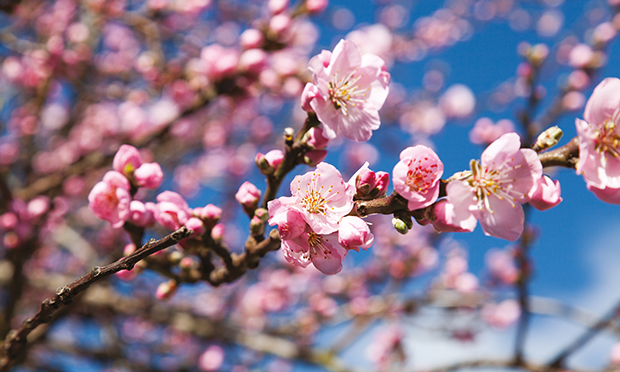
A London spring does not care for pandemics. It is never halted by pollution or the machinations of men at war.
Whilst Hackney residents stay safely inside their homes, exotic species of trees are stirring in the cracks and chasms of the borough’s streets.
Blooming Yoshino cherries – the kind that tempt tourists to Tokyo but are rare in the UK – flourish. Magnificent magnolias, too.
The handkerchief tree’s white flowers and the deep magenta bloom of the Judas tree are both on their way.
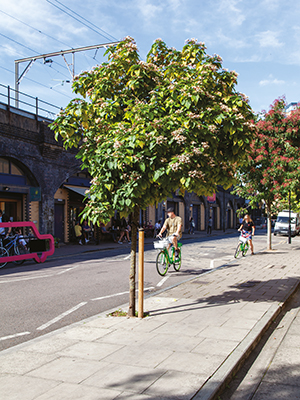
As the weeks progress, scarce Korean bee-bees and sweet-sounding peanut butter trees will come into their own.
For Paul Wood, the aptly-named Street Tree author and blogger who leads arboreal tours through the capital, Hackney’s diverse street trees are second-to-none.
“Walking through the borough’s streets you are in for a surprise around every corner,” he says. “Hackney truly is London’s urban arboretum.”
The unofficial title has been well-earned.
On average, 25 per cent of London has canopy cover whilst Hackney currently boasts just 20 per cent.
Yet the borough is already home to over 350 species of trees, and the council has plans to rapidly increase canopy cover to 40 per cent through one of the largest tree planting programmes in the country.
Between 2020 and 2022, it has promised to plant 5,000 street trees, 30,000 saplings and whips and 1,000 mature trees in parks and green spaces. This season, they planted 11,000 trees, many of them on Hackney marshes.
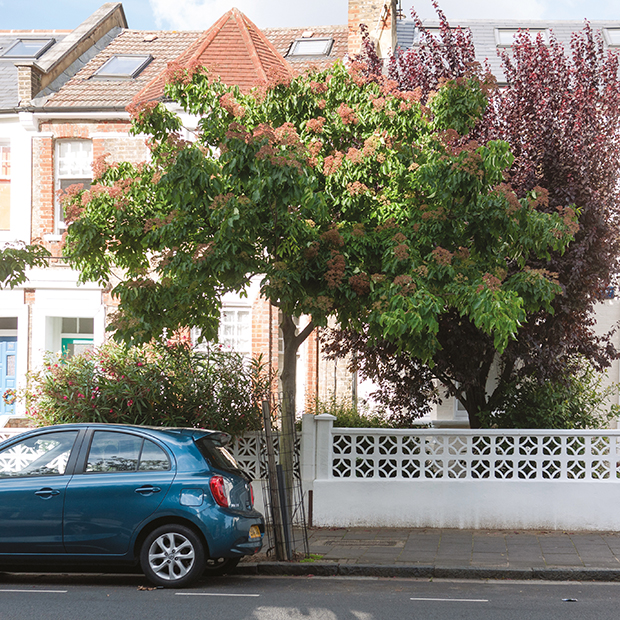
The trees are an investment in the future: part of an arsenal against the effects of climate change.
Together, they soak up pollution, bring oxygen to the air, cool hot streets, store carbon and absorb groundwater.
Autumn fruits sustain birds and animals when other food is scarce and spring blooms are abuzz with bees.
Intentionally diverse, the trees are better able to collectively resist viruses like Dutch Elm disease. Their combined canopy also connects habitats, offering the city’s non-human residents with pathways through our man-made world.
In future, Wood says “trees are going to have so many benefits to city-dwellers to make cities more liveable”.
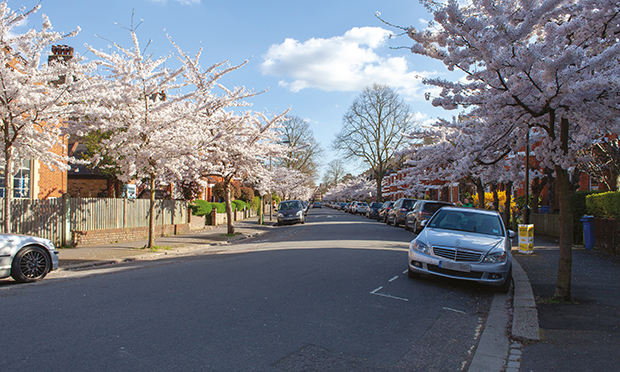
Londoners under lockdown are craving their nature fix.
According to Hackney’s environment and public realm boss Cllr Jon Burke, there is “more than enough space for people – provided they are sensible – to access Hackney’s green spaces”.
Yet, with residents sparring on social media about alleged park overcrowding and breaches of social distancing guidelines, the crisis may still force the council to consider whether its streets should be handed over to pedestrians too.
The Town Hall had already, before the coronavirus lockdown, designated Dalston’s Colvestone Crescent as the first of its ‘21st century streets’, where green space will replace tarmac.
“If ever there was a time to demonstrate that radical change for the benefit of humans and the environment can happen and that the sky isn’t going to fall in, now is it,” says Burke.
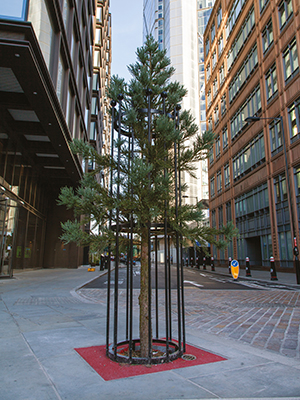
Photograph: Paul Wood
In the forbidden spring sunshine, the value of nature in Hackney’s streets is more obvious than ever.
The diverse species which line the borough’s roads bring the sights and smells of far-flung places within reach of everyone – whether they have access to their own private green space or not.
The trees are nobody’s and yet everybody’s to enjoy, on a walk or through a window.
Those venturing out for their daily exercise might wander to Wilberforce Road and Finsbury Park Road to see magnificent cherries.
Stoke Newington and Clapton host an abundance of plants carefully chosen by specialist council workers.
Shoreditch is home to more exotic varieties: the close city streets create an ‘urban heat island’ more welcoming to the likes of lemons than many native species.
The joy they now bring is the result of past planning.
In Islington, the abundance of the causasian wingnut, native to Armenia, Azerbaijan, Georgia and Iran is the leafy legacy of one former Islington tree officer who was particularly fond of the species decades ago.
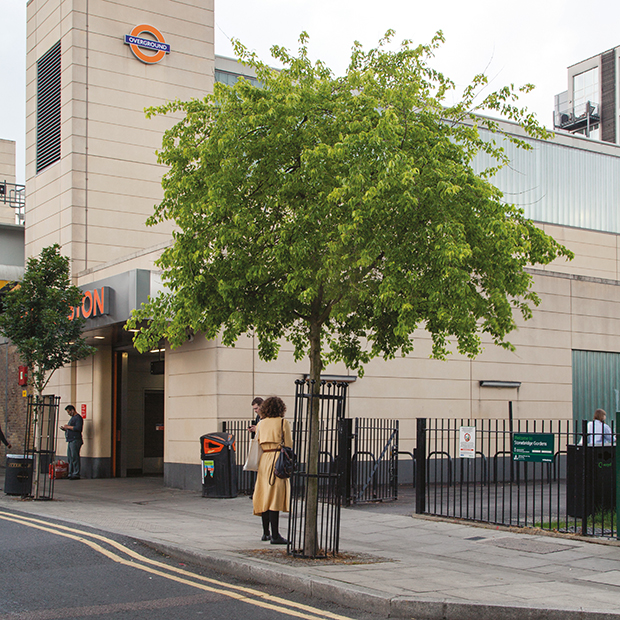
Hackney’s diversity is the result of investment and the dedicated work of specialist tree officers.
The benefit of the borough’s street trees lies in their number, but many are known and loved as individuals.
London’s great trees are – for Wood – those with history; the landmarks that frame daily life, or which have grown to reflect the changing conditions of the city.
Clapton Square’s pair of elderly True Service trees, likely remnants of Loddiges nursery which supplied trees to Kew Gardens, have matured with Hackney since the borough’s days as a village.
The ancient oak trees of Richmond Park and the 500-year-old Bruce Castle oak in Tottenham have survived wars, revolutions and industrial pollution.
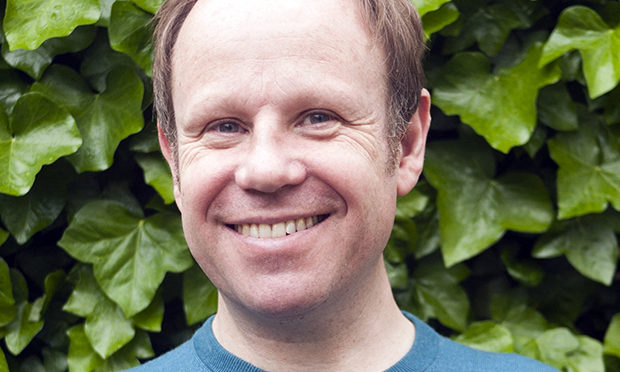
Photograph: courtesy Paul Wood
Like all inhabitants of this living city, London’s street trees will need care and protection during this crisis and those to come.
Of all the capital’s trees, the precarious Giant Redwood which towers over New Cross Gate Station has proved, for Wood, the most intriguing. Its origin is a mystery; its future uncertain.
He said: “It’s tenacious. It’s really spectacular. But it also needs more loving attention if it’s going to survive.”
An updated edition of Wood’s book, London’s Street Trees, featuring a walk through Haggerston and De Beauvoir, is now available from Safe Haven Books, Amazon and The Street Tree
You can also follow him on Twitter and Instagram at @TheStreetTree
